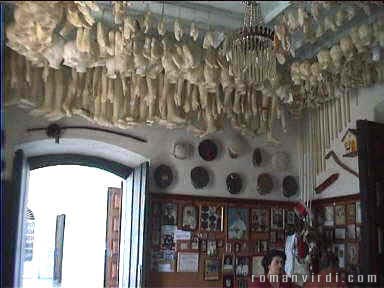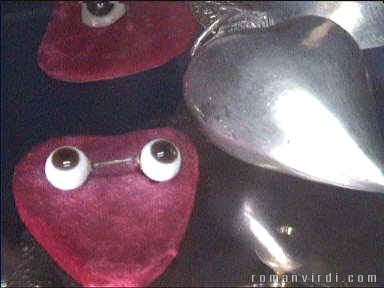
Salvador
19 February 2002: Can't sleep after 6, my coughing had
been bad, get up and shower, we get ready but then sleep a bit again,
we're ready for breakfast around 7. It's good but there are a lot of flies
around.
We take the Ribeira bus to Igreja Bomfin, our first church for the day.
Bomfim is a healing church, with one room dedicated to the pictures of
people who have survived sure deaths due to accidents or sicknesses. There
are probably thousands there. The ceiling is full of plastic body parts:
heads, arms, hands, legs, feet etc, those body parts which were miraculously
cured. There's a small museum upstairs with a good view of the surroundings.
Outside there are lots of sellers selling ribbons, which are free in single
quantities and a Real or two per dozen.
We want to walk to the lighthouse which is supposed to be a half hour's walk from the church. It's very hot by now. We first encounter a fort, which we visit, then a church, but we can't find the lighthouse. Due to the heat we weren't too keen to find it anymore. We take a taxi back to Mercado Modelo, which is open today. There's a Capoeira show for the tourists in full swing but they're not too good.
Capoeira is a martial-arts type of African dance between two males (usually), who dance and kick box each other without really connecting. They're accompanied by furious percussion and sometimes singing. We go into the Mercado and look at all the souvenirs, which are amazingly cheap, so much so to be almost obscene. We get some small naive oils paintings of Pelourinho, some masks, a Bahia Doll. We have some drinks in Modelo's upstairs restaurant, where the personnel are wearing nice traditional garb. We watch the a/c luxury buses unloading package tourists and I feel sorry for them. It's such a shame to be rushed through such a marvelous country.
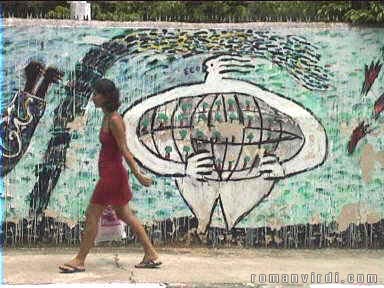 |
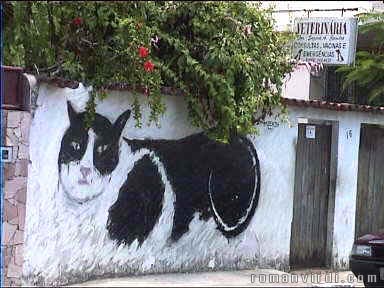 |
|
|
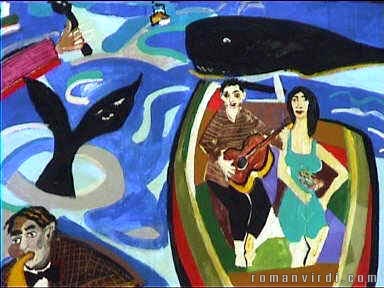 |
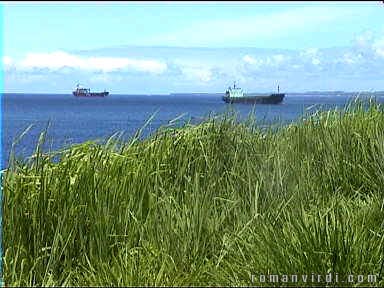 |
|
|
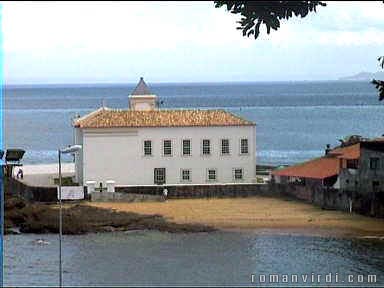 |
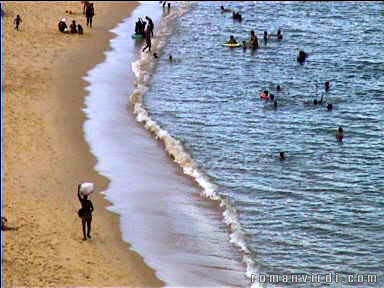 |
|
|
After that we head towards the Elevador to be transported up to Pelourinho again, but there's a long line waiting. A bus declaring 'Praca de Se', we run and catch it. It's hot but quicker. Once up, we check out all the churches we'd missed the last time we were here, and also the Museo Afro-Brazileiro (not too great). We have good lunch at Kilo Panoramico (we couldn't find the promised view, though). We continue to the Jorge Amado exhibition at Praña do Pelourinho, it's open but useless. We have some beer, check our mails in the internet, have a snack and take a taxi back to our hotel.
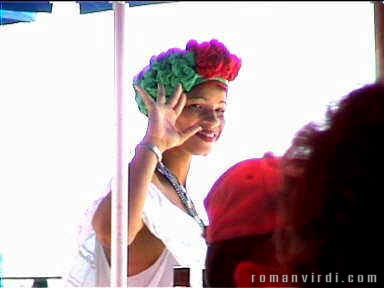 |
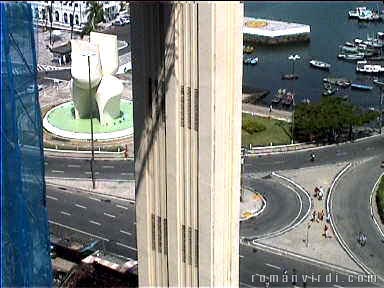 |
|
|
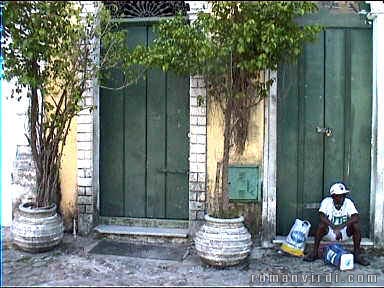 |
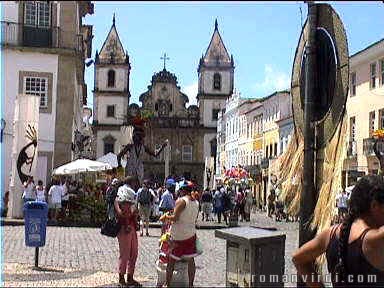 |
|
|
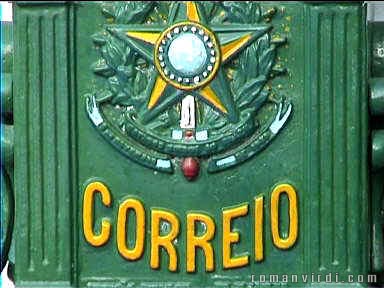 |
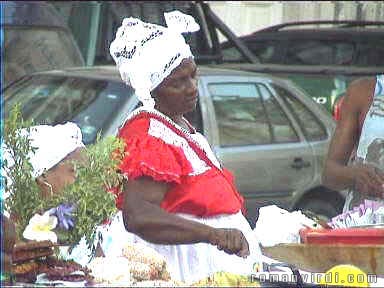 |
|
|
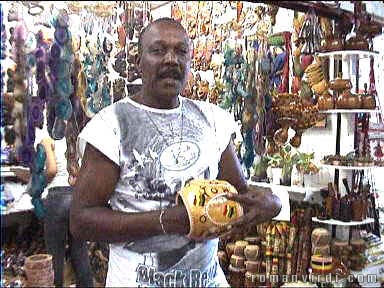 |
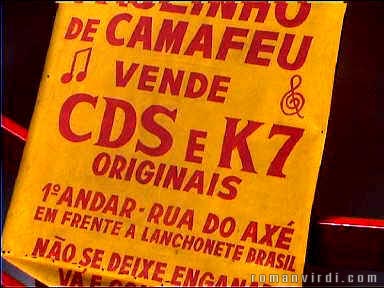 |
|
|
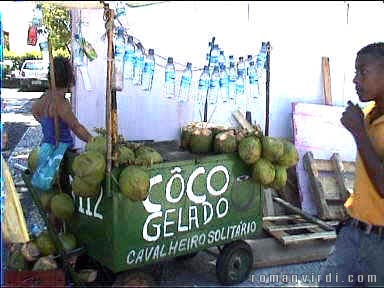 |
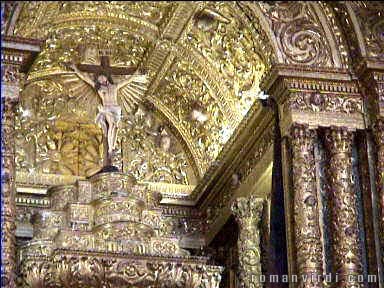 |
|
|
We ask the receptionist whether we could shower (we didn't have a room anymore, remember), and, lo and behold, it's possible! The fellow brings us towels and we prepare ourselves for the Candomblñ evening. We're picked up by the driver at 8 in the evening, there's an Italian couple wanting to come along too. We drive for about 20 minutes through the dark streets of Salvador by car before abruptly stopping in a small street. It's a black neighbourhood, and our guide quickly takes us into a house where drumming can be heard inside. The entrance has some paintings on the wall, it's a very simple house, poor people live here. The entrance leads further on to a courtyard, where the ceremony is in full swing.
We're standing first, women to the left, men to the right, we meet up with other tourists. All the tourist men have light shirts and cream pants, the women wear more colour. Later on, we're seated, further down the room are the blacks, on the far side is the drummer, who beats a wicked rhythm the whole night. He sometimes also plays shuffle rhythms (remember 'Chain Reaction' by Diana Ross?). In the middle of the courtyard is a table at which some elderly women are seated. Dancers dance counter clockwise around them. Some of the women are already in quite a trance. One of the old women gets a telephone call in the middle of the ceremony, but she makes no big deal about it. There's one young chubby woman who's really in a trance, she gets her sweat regularly patted off with a cloth by one of the other women, shrieks and smokes cigars with a vengeance. The western spectators all seem pretty confused, with slightly apprehensive looks on their faces. The corner right next to me has an exit and there seems to be some special about it since dancers quite frequently stop there and shriek out loud. Then the priestess followed by some of the dancers start embracing everybody one by one. The whole ceremony has a very strange, unusual atmosphere about it.
At 10 we leave, the driver is surprisingly in a big hurry to take us away (I don't know whether it's because of fear of getting robbed?). I loved the whole ceremony (except the cigar smoking, which taxed my sensitive throat). The Italians had somewhat mixed feelings. The driver offers to drive us to the Rodoviario for a reasonable fee. We pack our rucksacks in the hotel and then set off.
There are two buses to Lenñios around 23:00, we're on the second. It's a luxury bus and has a/c. What a surprise, since for the low price of 25 R$ we were expecting local bus fare. We have seats right in the front which have seat belts. The bus lights are out soon after we depart, the drive is swift but there's a velocity alarm which beeps when the driver exceeds 90km/h. The driver doesn't seem to respect bends a lot, since he seems to throw himself into them at full speed and I always wonder when we're going to be off the road.
I'm thankful that the loud Israeli kids sitting around us eventually fall asleep. Some 60's/70's music is provided by someone's boom blaster, but it's quite a few seats behind us. We're both apprehensive about being robbed and wonder what's going to happen every time the bus slows down or stops. We have about 2 or three stops on the way, partly dropping locals off in the dark.

